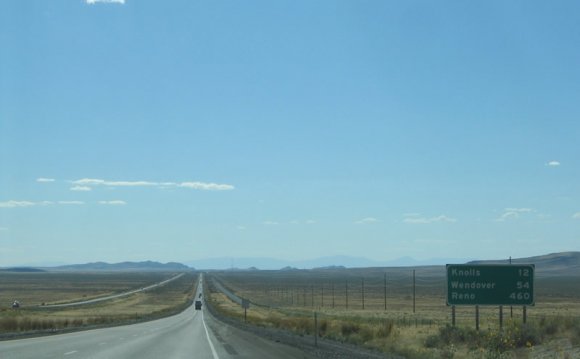

Trading Wetlands for Lawn Water
Utah is proposing to divert 20% of the primary water source feeding the American West’s largest remaining wetland ecosystem, the Great Salt Lake, in order to provide more municipal water to the Wasatch Front (most of which will be used to water lawns). This $2 billon water project will divert 220, 000 acre-feet of water out of the Bear River, significantly lowering the level of the lake, destroying massive sections of Utah wetlands, and impacting millions of migratory birds.
There are a number of less expensive and less destructive alternatives, but lobbyists are poised to push the project through legislation—no matter the consequences. The Great Salt Lake needs your help.
No Place To Land
The wetlands that will be destroyed by the Bear River diversion, including the federally managed Bear River Migratory Bird Refuge, are a critical habitat for 8 million migratory birds. Birds from over 230 species travel from as far south as Chile, north to the Arctic Circle and as far west as Siberia. Many species gather at the lake in larger populations than anywhere else on the planet.Utah water salesmen have not studied the impacts of their diversion upon the migratory bird species dependent on these wetlands, but recently lobbied the Utah Legislature to pass a bill to begin funding the project’s construction. Both the Jordan Valley Water District and the Weber Basin Water District hired lobbyists to push a $5 million construction fund in the 2015 Legislative Session
All Cost, No Benefit
The full project will cost far more however; estimates for the diversion exceed a staggering $2 billion. This will cause large increases in water rates, impact fees and raise property taxes—unintended consequences that Utah’s water salesmen are willfully ignoring in their haste to spend money.
Another unintended consequence—Worse Air Quality.
Utah’s geography creates a natural trap for air pollution, specifically small airborne dust particles. Because the diversion will lower the Great Salt Lake, dust from the vast areas of exposed wetlands will contribute to even lower air quality in the Wasatch Front—a region that already has some of the worst air in the nation.
The Bear River and Great Salt Lake Need Your Help
It’s not too late to save these amazing ecosystems from this disastrous water project. By reducing our water use and urging our elected officials to pursue the wide range of alternatives available, we can put this bad idea to rest.
Two Alternatives to Bear River Development
- Convert Surplus Agricultural Water for Municipal Use. 82% of the water consumed in Utah is currently used by farms and ranches. As the Wasatch front grows, urbanization will continue to convert its farms to homes and businesses. Although the loss of farmland is nothing to celebrate, paving irrigated farmland creates a surplus of water.Converting this surplus water to new urban uses is a key component of ensuring adequate water supply, but Utah’s water salesmen have been ignoring and downplaying the growing amount of agricultural water available for over a decade. Reallocation, after all, is less profitable than collecting billions of taxpayer dollars to build this river diversion.
- Remove Property Tax Subsidies that Encourage Water Waste. The water suppliers proposing Bear River Development receive more money collecting property taxes from area residents and businesses than from selling water. They use those tax dollars to lower water rates, which encourages the wasting of water. It also forces all taxpayers—even those who are conscientious water users—to pay for their neighbor’s waste.
YOU MIGHT ALSO LIKE











